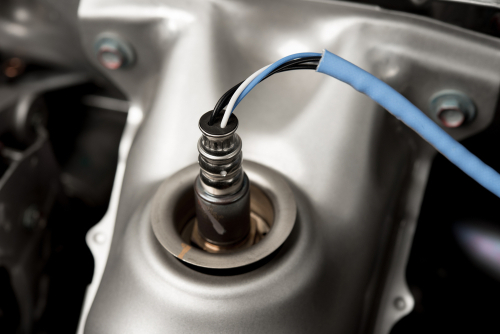P1131 is a diagnostic trouble code that applies to vehicles manufactured by Ford, including the Nautilus. Trouble codes that start with P1XXX were reserved for manufacturers. This code occurs when the upstream O2 sensor on bank 1 fails a diagnostic test twice in a row.
P1131 Quick Facts
- DTC P1131 is usually caused by a bad oxygen sensor, fuel injector, or vacuum leak. But, there can be other causes as well.
- This code does not normally cause any drivability issues.
- P1131 is a Ford code (Mercury, Ford, Lincoln)
- Affects bank 1. When it’s bank 2, the code is P1151.
Definition and How to Find Bank 1

Ford chose P1131 to indicate “Lack of Upstream Heated Oxygen Sensor Switch | Lean Bank 1“
Upstream– The upstream oxygen sensor is the sensor before your Nautilus’s catalytic converter. It’s usually bolted to the exhaust manifold or right after it.
Bank 1– Bank 1 is the part of the engine with the first cylinder. If your Ford has a four cylinder engine, this doesn’t apply, as there is only one bank. Bank 1 is easy enough to find. Here’s a short article on how to find which side of the engine has bank 1. It’ll open in another tab.
Once you find it come back here and we’ll try and figure out what’s causing P1131 in your Nautilus.
Lincoln Nautilus: P1131 Symptoms
Typically, there are not going to be any symptoms associated with P1131 (other than the check engine light). You might (big might here) smell the faint scent of fuel.
Common P1131 Causes
- Fuel Injectors can cause P1131
- Bad Fuel Injectors can cause P1131, but it’s more likely to be a bad O2 sensor.
- Bad O2 Sensor (Bank 1 Sensor 1): See above if you need help locating it.
- Vacuum Leak
- Fuel Pressure Issue: The fuel pressure could be too high or low.
- Bad Mass Airflow Sensor
- PCM (The vehicle’s computer)
Lincoln Nautilus: P1131 Diagnosis

There are some things that you can do at home to detect what is causing P1131 and repair it. Here they are in order (somewhat) of likelihood/ease to check.
Bad O2 Sensor Wiring
The upstream oxygen sensor on your Nautilus is easy enough to find. Once you know where bank 1 is, just follow the exhaust from the manifold until you find the oxygen sensor.
Inspect the wiring harness to see if it has been damaged in any way. Look at the contacts where they plug into the sensor itself. Due to the location of an oxygen sensor on hot exhaust components, the harness fails more than just about any wiring harness on a vehicle.
Related: Lincoln Nautilus Bad O2 Sensor Diagnosis
Bad Oxygen Sensor
P1131 is triggered because the oxygen sensor failed a test. Specifically, a test is designed to make sure that the oxygen sensor has the proper output voltage and response rate. It must fail this test twice in order for the check engine light to come on.
With that in mind, knowing that the oxygen sensor has failed this test, it’s most likely the reason your Nautilus has P1131.
Vacuum Leak
The system could have a vacuum leak. Determining where a vacuum leak is can be easy. Here’s a great video on exactly how to do that.
Fuel System
The fuel system itself can cause P1131.
The fuel pressure could be too low. This would be caused by a clogged fuel filter, weak fuel pump, or bad fuel pressure regulator. But, If the fuel pressure is too low, you’d likely get P1151 (same code, just the other side of the engine) as well.
With the above in mind, if the fuel system is to blame, it’s likely an issue with a fuel injector.
A clogged fuel injector can lean the mix out on bank 1, without affecting bank 2.
Wrap Up
As you can see, P1131 can be caused by a lot of issues. It’ll more than likely be a bad oxygen sensor, fuel injector, or vacuum leak that is causing it. Outside of that, it can be pretty challenging for a DIY guy to track it down.
Good luck diagnosing your vehicle. If there’s anything you’d like to add, please leave a comment.

